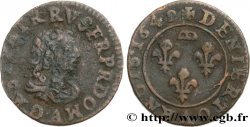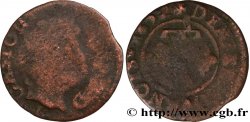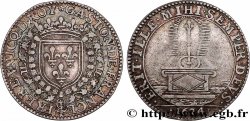fjt_015056 - DOMBES - PRINCIPALITY OF DOMBES - GASTON OF ORLEANS 1645
Not available.
Item sold on our e-shop
Price : 114.34 €
Item sold on our e-shop
Price : 114.34 €
Date: 1645
Metal : silver
Diameter : 28 mm
Rarity : R1
Coments on the condition:
Jolie patine grise
Catalogue references :
Obverse
Obverse legend : GASTON. DE. FRANCE. ONCLE. VNIQUE. DU. ROY.
Obverse description : Armes de Gaston de France, cernées du double collier.
Reverse
Reverse legend : IN VTRAMQVE PARATVS ; À L'EXERGUE : 1645.
Reverse description : Une couronne de laurier et une d'olivier entrelacées.
Reverse translation : Préparé aux deux couronnes.
Commentary
Ce jeton, qui provient d’une très ancienne collection, porte un minuscule numéro d’inventaire porté à la plume sur une petite étiquette. Gaston de France était le frère unique de Louis XIII, ce qui ne l'empêcha pas de comploter à plusieurs reprises contre lui. A la date de ce jeton, Gaston était usufruitier de la souveraineté de Dombes, depuis la mort de sa femme, Marie de Bourbon de Montpensier, en 1627. Il le reste jusqu'à la majorité de leur fille, "La Grande Mademoiselle", en 1650.








 Report a mistake
Report a mistake Print the page
Print the page Share my selection
Share my selection Ask a question
Ask a question Consign / sell
Consign / sell
 Full data
Full data



